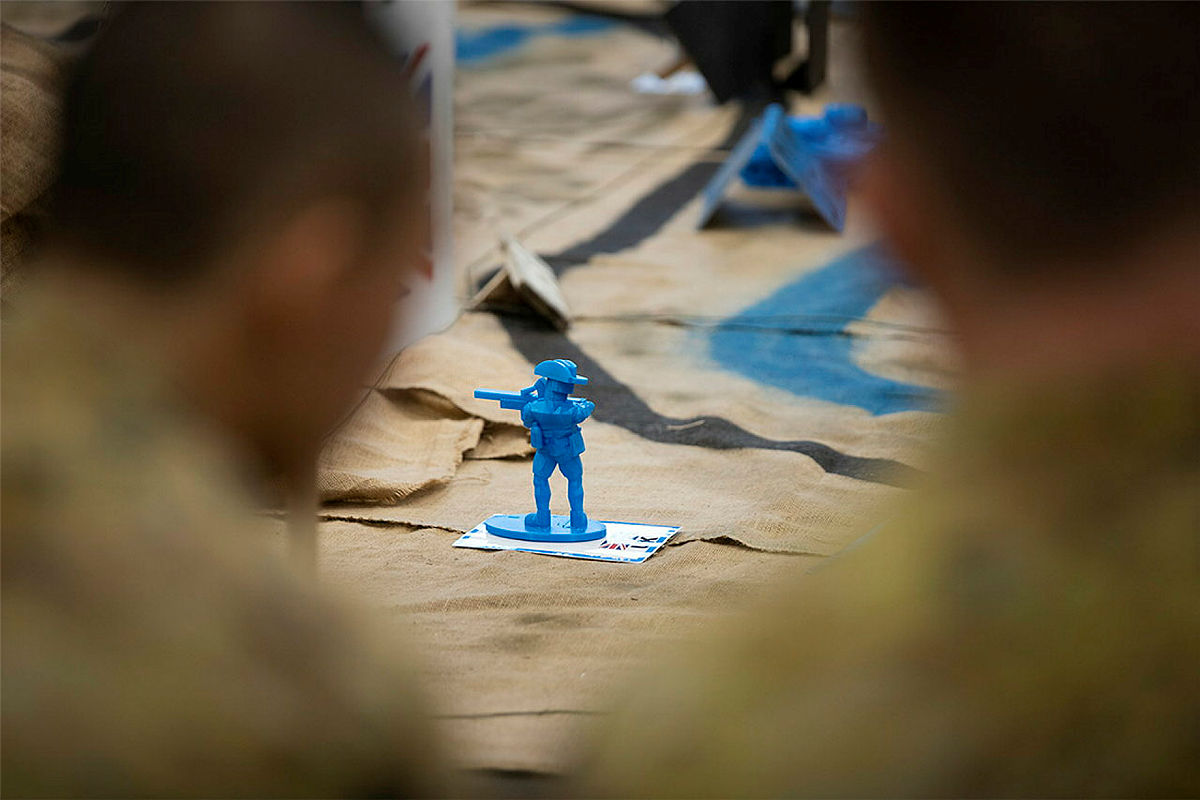
Australia is currently undertaking the greatest peacetime recapitalisation of its defence force in the nation’s history, and if the prime minister, defence minister and Home Affairs secretary are to be believed it couldn’t come a moment too soon. The surging program of investment includes a dizzying array of highly complex, short- and long-term projects that will require significant specialised support to deliver. That requires hard-to-come-by technical, tactical and management skills for the wide array of tasks facing the organisation, from cutting steel to cutting code.
As ASPI’s Marcus Hellyer points out, Defence already relies on a pool of contractors and outsourced service providers, at a price tag that runs into the billions. Many fill roles that aren’t viable or economical for service personnel (such as mowing lawns and manning gates). But many provide skills that Defence can’t attract, can’t retain or simply doesn’t need on a long-term basis. And while contractors may be expensive, so are service personnel. The former, however, are a highly flexible resource readily moving between projects and taking with them knowledge that is not lost in the posting cycle. On top of this, a very large percentage of the contractor workforce appears to be veterans.
Defence members hang up their uniforms for many reasons. Some leave dissatisfied with the service and never want to look back. But many more leave for reasons including family, financial and medical factors, while remaining deeply committed to the defence of the nation. Those veterans bring an intimate understanding of the organisation, military capability and, in many instances, specialised technical and managerial experience. Those are valuable skills that the ADF has spent years and a large amount of money developing (although these individuals have almost invariably gained additional skills through further study, often in their own time).
It begs the question of how many veterans currently work for Defence. The probable answer is that the department itself doesn’t know. Unlike the United States, where the government actively prefers to employ veterans, it seems that Defence has simply never asked the question in a formal or systematic way when hiring or contracting.
But perhaps the most significant reason for the lack of data is that the department itself almost never directly employs veterans (with the exception of members of the Defence public service workforce who are themselves veterans). Current procurement mechanisms create barriers to individuals (and many small enterprises) to supplying services directly to the government. Instead, structures like panels of major service providers are used, which are typically restricted to a small number of very large firms who often subcontract work to the individual or small business best placed to deliver the service. For some veterans that process may be advantageous. Large multinational firms may offer security, professional development and tools to help the individual deliver outcomes.
Certainly, when the government is buying a product or service, such as building an armoured vehicle (often referred to as ‘below the line’), it makes financial sense to buy from the manufacturer themselves. But often the department just needs the skills of a particular individual or small firm to deliver ‘above the line’.
Currently when the government wants to buy knowledge and experience, often from people that it has spent years training, it must do so via third parties who provide limited ‘value add’ but who charge additional and sometimes significant costs. That not only creates barriers for veterans and veteran-run businesses but increases the cost to Defence of accessing the skills it needs. Fortunately, the government already has a model which can be adapted to make it easier and cheaper to access veteran’s skills.
Using the highly successful Indigenous Procurement Policy (IPP) as a model, the government could establish a veterans procurement policy, or VPP, which could create significant cost savings, opportunities for veterans and more agile enterprise outcomes.
The IPP, in place since 2015, has generated more than $3.5 billion, with over 24,470 contracts awarded to more than 2,140 Indigenous business. Exemption 16 of the Commonwealth Procurement Rules allows portfolios to procure directly from Indigenous small- to medium-sized enterprises (SMEs). The mandatory set-aside requires that Indigenous businesses be given an opportunity to demonstrate value for money before there is a general approach to market. That proven framework could readily be adapted to create a VPP that allows Defence and all other Commonwealth agencies to directly access the expertise they need.
A VPP would also reduce subcontracting (and often even sub-subcontracting) premiums by enabling the government to access the individuals and businesses they want directly, without involving a third party. And it would even reduce risk (commonly invoked as an argument against contracting directly with SMEs and for the need for major service providers and labour-hire companies), via proven structures, polices and process.
A VPP would demand a minimum 51% veteran ownership and require a percentage of profits be returned to veteran support initiatives. That in turn could help reduce the pressure on the Department of Veterans’ Affairs by providing additional funds to support those in need through the profits made by veterans in the private sector.
But a VPP wouldn’t only benefit veterans. Defence has more than 7,000 individuals providing ‘above the line’ services, at an annual cost in excess of $1 billion. The majority of those people are contracted (or subcontracted) through a major service provider. And, as one of the biggest departments, Defence’s procurement panels are utilised by numerous other government departments. Cutting out the ‘middle-man’ could put more veterans into relevant roles while saving the government tens to hundreds of millions of dollars every year.
The Prime Minister’s Veteran’s Employment Program states that ‘veterans represent a unique, diverse and high-performing source of talent’. That’s very true. Perhaps the government, starting with Defence, might take advantage of that.

